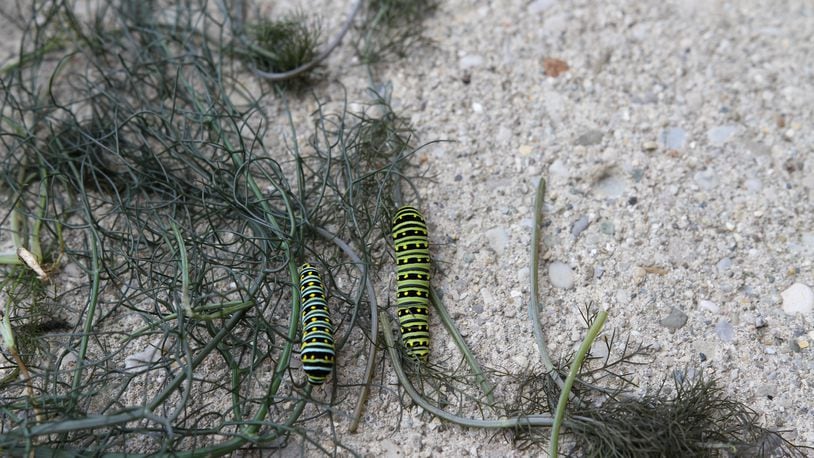While the gingko tree is a perfect tree in the eyes of a horticulturist (no insects or diseases, beautiful branching structure, easy to grow, great fall color, interesting leaf structure, etc.) it is not a tree that is beneficial to pollinators.
In fact, there are few listed caterpillars that feed on gingko leaves and few pollinators that visit the male pollen cones. It is wind pollinated so it doesn’t need a pollinator to help spread the pollen.
The concern from many readers (again, I truly appreciate your emails and perspectives) was that this is not a good recommendation as a tree to be used to help with the plight of our pollinators. Oaks are the preferred species since so many caterpillars feed on them, resulting in the survival of many species of butterflies.
I like to remind people that we all have different philosophies when it comes to gardening, horticulture, and landscapes. I have my own philosophy that is guided by research-based, scientific information.
I also have my opinions about plants that I like, don’t like (there are very few other than invasive species) and wouldn’t plant in my landscape. You also have your own likes and dislikes.
For instance, I am not totally against pesticides, and I will recommend them in some cases. Others are totally against pesticides and would never use them.
However, when I use a pesticide, I have gone through a rigorous process, including identifying the specific pest, selecting the right solution which could be cultural and not chemical.
If I do use chemicals, I will select the “softest” product that won’t kill beneficial insects and I follow directions specifically to prevent damage to pollinators.
So back to planting for pollinators. I do take care of the pollinators in my landscape and in my teaching.
I have written several columns over the years regarding pollinators, their plight, reducing pesticides, and more. I always incorporate information about pollinators in my teaching when appropriate.
In my own landscape, I have room for cultivated plants and trees such as the gingko, as well as native plant species.
I have a black cherry which is the host for many pollinators, as well as Carolina allspice, the species coneflower, many other native perennial species, and several oaks.
My philosophy when it comes to our landscapes and gardens is for everyone to plant something that will help pollinators. Even if it’s just one plant in their flower beds or a tree or shrub.
The challenge for pollinators is that there are so many places that have been developed either commercially or into suburbs that don’t have plants for pollinators.
Therefore, if we all do our part and plant SOMETHING for the pollinators, it will connect those areas that are already planted, hopefully leading to improved habitat for pollinators.
I hope that those of you who were unhappy with me writing about the gingko understand my philosophy and give me grace for it. I also hope that you understand I only have so many inches in this column to explain topics. Thanks for your feedback!
About the Author
